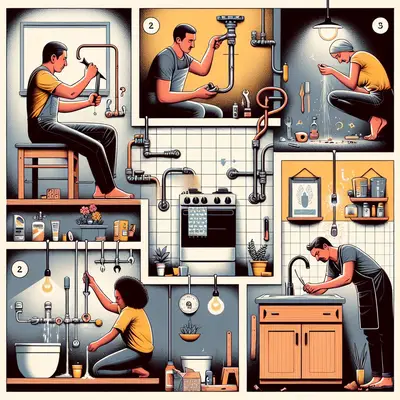The Leaky Faucet
A leaking faucet can be an annoying and costly issue. However, with a few tools and some patience, you can stop the drip yourself. First, identify the type of faucet you have - ball, cartridge, or ceramic disk. Once you know, purchase a repair kit from your local store. Turn off the water supply, disassemble the faucet using the instructions provided in the kit, replace the damaged part, and reassemble. Remember, the key to a successful repair is taking your time and being organized.
The Stubborn Stain
Whether it's on the carpet, furniture, or walls, stubborn stains can ruin the look of your home. The secret to removing stains is acting fast. First, blot, don't rub. Rubbing can spread the stain and push it deeper into the fibres. Use a cleaning solution appropriate for the material and test it on a small, hidden area first. Apply the solution to the stain, leave for a few minutes, then blot again. Repeat until the stain is gone.
The Faulty Light Switch
A faulty light switch can be a safety hazard. But, with caution and the right tools, you can replace it yourself. First, turn off the power at your home's circuit breaker. Remove the faceplate and unscrew the switch from the wall. Carefully pull it out, noting the wire connections. Disconnect the wires, connect them to the new switch (in the same configuration), screw the switch back into the wall, and replace the faceplate. Always double-check the power is off before starting this repair.
The Creaky Door
Creaky doors can be irritating but are easy to fix. All you need is a can of WD-40 or similar lubricant. Spray the hinges while moving the door back and forth to work the lubricant into the hinge. If the creak persists, you may need to remove the hinges and clean them before reapplying the lubricant.
The Cracked Tile
A cracked tile can become a significant issue if not addressed promptly. To replace it, you'll need a grout remover, a chisel, and a trowel. First, use the grout remover to loosen the grout around the tile. Use the chisel to remove the tile, being careful not to damage surrounding tiles. Apply adhesive with the trowel to the floor, place the new tile, and apply fresh grout around the edges. Remember to let the grout dry before walking on the tile.
Conclusion
With these practical solutions, mastering common household repairs has never been easier. Not only will you save money, but you'll also gain a new set of skills that can be used throughout your home. Embrace the DIY spirit and take control of your home repairs.



